In the name of “equity”, California DOE’s 2021 Mathematics Framework attacks the idea of gifted students and eliminates opportunities for accelerated math.
- no grouping students by ability
- no Algebra for 8th graders
- no Calculus for high schoolers
cde.ca.gov/ci/ma/cf/
- no grouping students by ability
- no Algebra for 8th graders
- no Calculus for high schoolers
cde.ca.gov/ci/ma/cf/
Why does CA DOE want to eliminate “gifted programs” for “high achieving students”?
Here’s what they say:
“In California in 2004-2014, 32% of Asian American students were in gifted programs, compared with 8% of White students, 4% of Black students, and 3% of Latinx students”
Here’s what they say:
“In California in 2004-2014, 32% of Asian American students were in gifted programs, compared with 8% of White students, 4% of Black students, and 3% of Latinx students”

California’s DOE justifies eliminating calculus for high schoolers because “only” 19% of high school calculus students end up taking math classes beyond calculus in college.
But how many high school AP English Literature students end up taking advanced literature in college?
But how many high school AP English Literature students end up taking advanced literature in college?
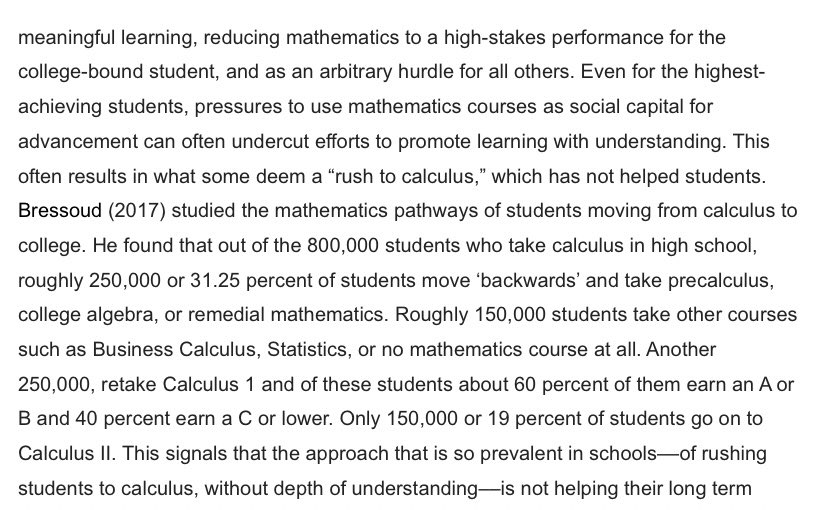
This attack on opportunities for public school students to take advanced math is the result of a once every 7 years review of math curriculum.
I encourage you to read the 2021 proposal for yourself.
cde.ca.gov/ci/ma/cf/
Then submit comments to
mathframework@cde.ca.gov
I encourage you to read the 2021 proposal for yourself.
cde.ca.gov/ci/ma/cf/
Then submit comments to
mathframework@cde.ca.gov

Mike Malione, of Piedmont Advanced Learners Program, offers a more on-depth analysis and critique of the 2021 Math Framework:
eduissuescom.files.wordpress.com/2021/04/short-…
eduissuescom.files.wordpress.com/2021/04/short-…

The California 2021 Math Framework says grouping students by ability in math is “inequitable” and points to studies showing that
when all students are required to take the same math courses, the results are more equal!
🧐
when all students are required to take the same math courses, the results are more equal!
🧐
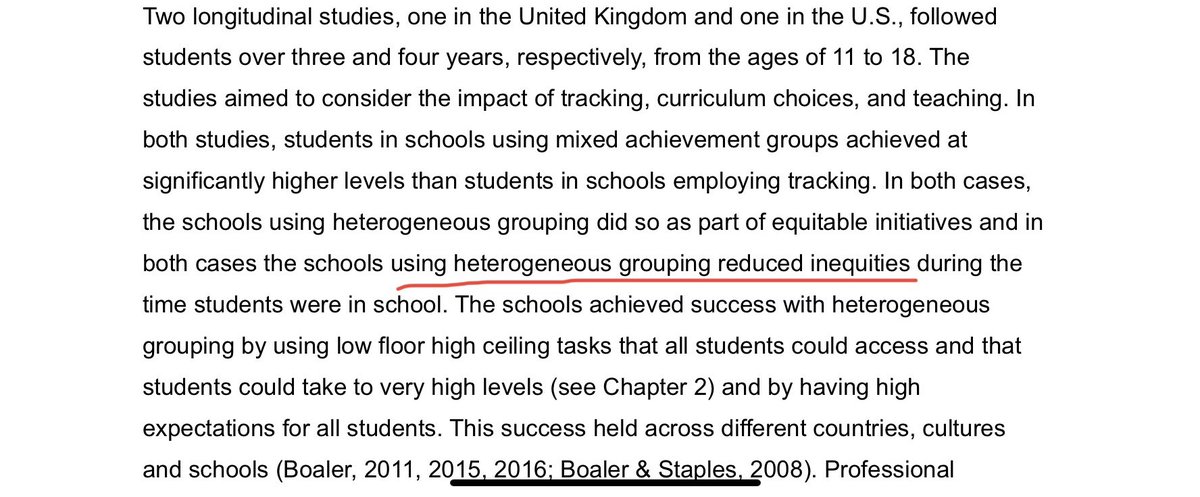
California 2021 Math Framework:
“districts and schools must confront the structural inequities of tracking and ability grouping, and to strengthen their efforts to support all students learning along a common pathway”
Moving faster is prohibited.
All must take the same path.
“districts and schools must confront the structural inequities of tracking and ability grouping, and to strengthen their efforts to support all students learning along a common pathway”
Moving faster is prohibited.
All must take the same path.

“The inequity of mathematics tracking in California can be undone through a coordinated approach”
“Unfortunately, many students, parents and teachers encourage acceleration beginning in grade 8... out of mistaken beliefs that Calculus is an important high school goal”
“Unfortunately, many students, parents and teachers encourage acceleration beginning in grade 8... out of mistaken beliefs that Calculus is an important high school goal”
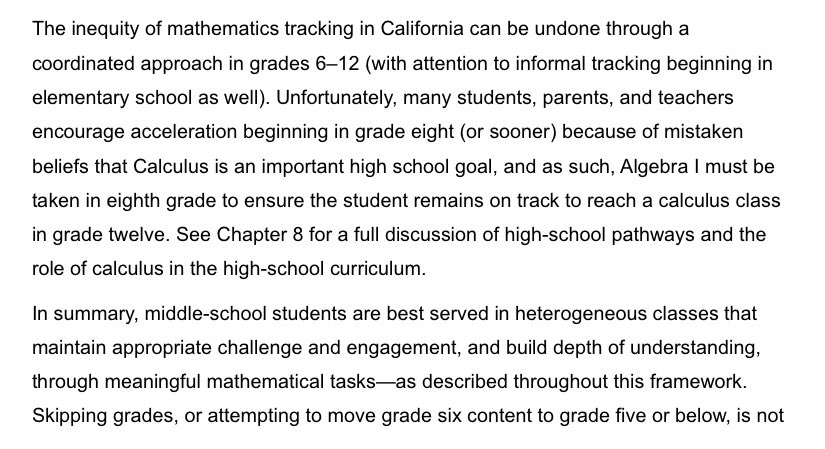
The California 2021 Math Framework has not yet been adopted.
On May 19-20, the Instructional Quality Commission (IQC) will meet again to propose a revised draft.
You can submit public comment via email to mathframwork@cde.ca.gov
More info here:
cde.ca.gov/ci/ma/cf/

On May 19-20, the Instructional Quality Commission (IQC) will meet again to propose a revised draft.
You can submit public comment via email to mathframwork@cde.ca.gov
More info here:
cde.ca.gov/ci/ma/cf/

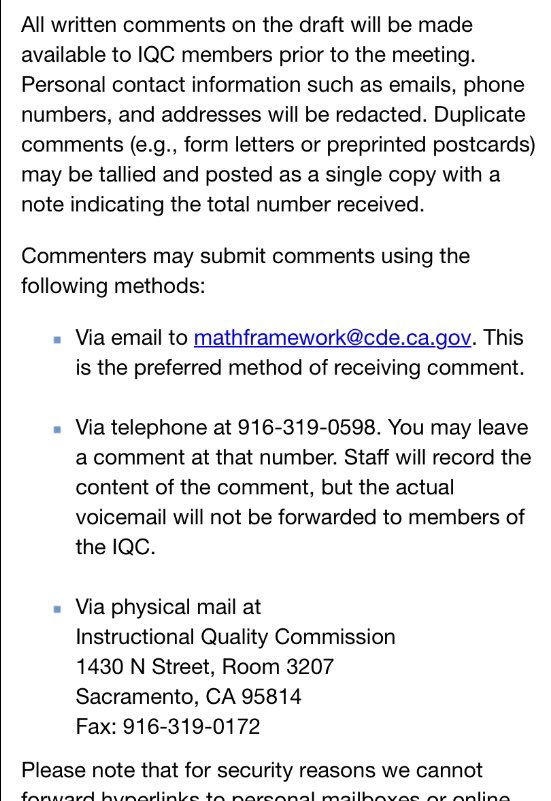
SORRY! Typo in the email address for comments.
SEND COMMENTS TO:
mathframework@cde.ca.gov
SEND COMMENTS TO:
mathframework@cde.ca.gov
Follow on thread. 🧵
Since I posted this, there has been some debate about the 3 statements at the top:
- no grouping students by ability
- no Algebra for 8th graders
- no Calculus for high schoolers
Let me address each of these in turn.
Since I posted this, there has been some debate about the 3 statements at the top:
- no grouping students by ability
- no Algebra for 8th graders
- no Calculus for high schoolers
Let me address each of these in turn.
“No grouping students by ability”
Chapter 7 (Grades 6 to 8) of the 2021 Math Framework clearly calls for an end to tracking, grouping students by ability and accelerated curriculum.
Chapter 7 (Grades 6 to 8) of the 2021 Math Framework clearly calls for an end to tracking, grouping students by ability and accelerated curriculum.
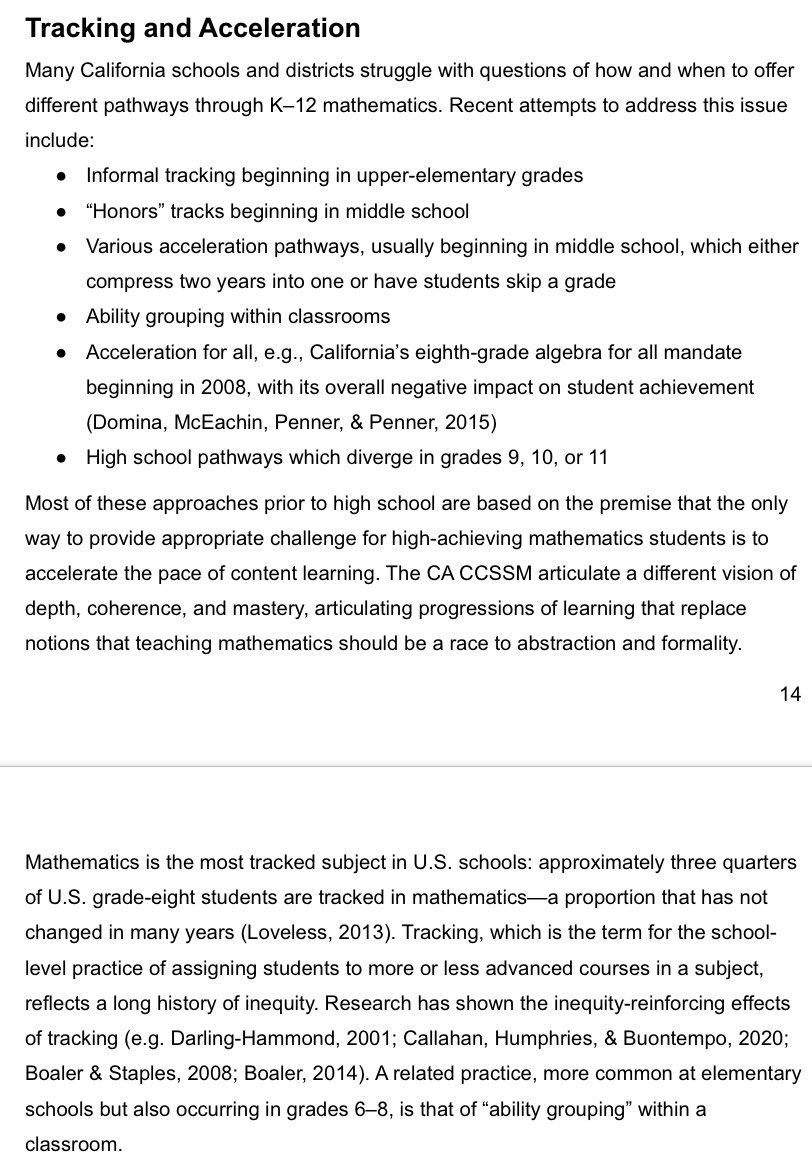
More Chapter 7
“The inequity of mathematics tracking in California can be undone through a coordinated approach in grades 6-12”
“Middle school students are best served in heterogeneous classes” - ie classes not separated by ability.
“The inequity of mathematics tracking in California can be undone through a coordinated approach in grades 6-12”
“Middle school students are best served in heterogeneous classes” - ie classes not separated by ability.

“No Algebra for 8th graders”
First, this should say “No Algebra I for 8th graders.”
But continuing in Chapter 7, we see the framework defending the rigor of California Common Core standard curriculum for what is currently known as Math 7, Math 8, Math I and Math II.


First, this should say “No Algebra I for 8th graders.”
But continuing in Chapter 7, we see the framework defending the rigor of California Common Core standard curriculum for what is currently known as Math 7, Math 8, Math I and Math II.
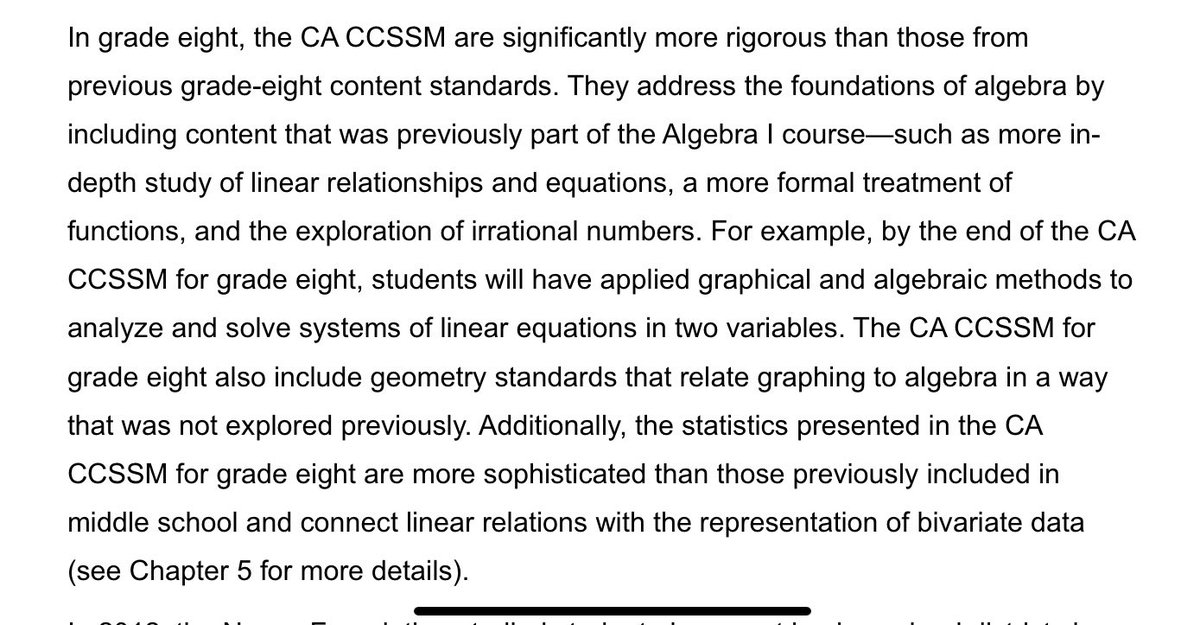
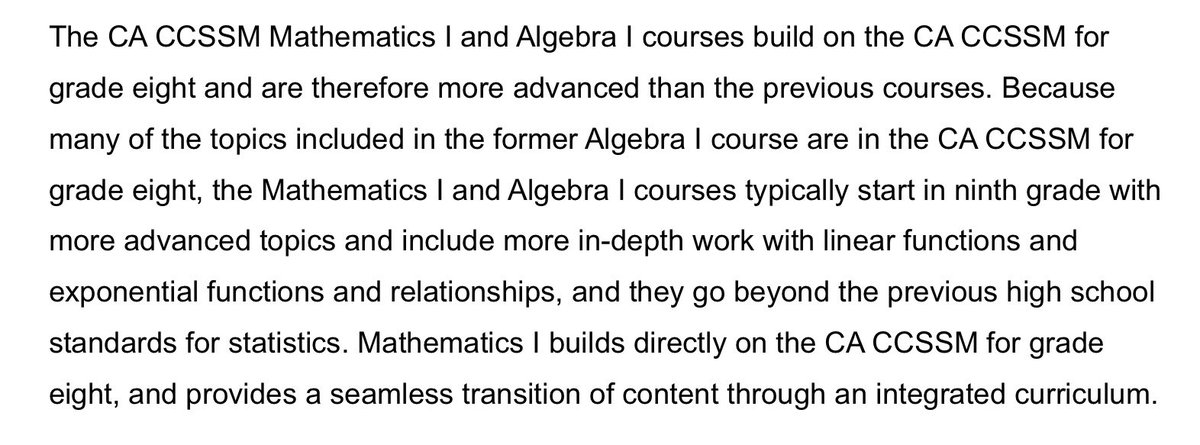
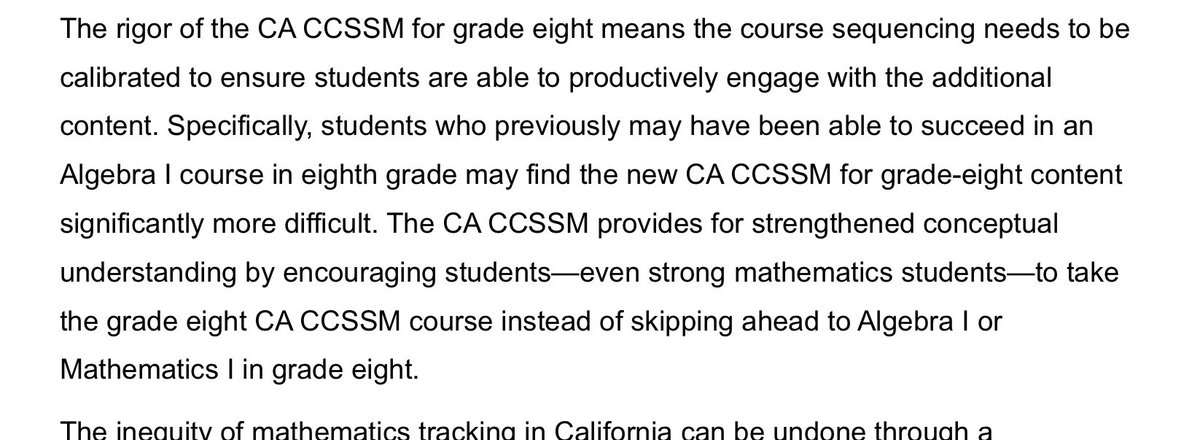
Now, as many parent with kids in California public middle school and public high school knows, Math 7 (7th grade) and Math 8 (8th grade math) are frequently combined into one “Enhanced Math 7/8” class for advanced math students to take in 7th grade, followed by Enh Math I in 8th.
If you don’t take Math I in 8th grade, you are not on course to take Calculus by 12th grade.
Chapter 7 of the 2021 Math Framework would not allow you to accelerate Math 8 into the combined “Math 7/8” course, or accelerate the Math I course into 8th grade.
Chapter 7 of the 2021 Math Framework would not allow you to accelerate Math 8 into the combined “Math 7/8” course, or accelerate the Math I course into 8th grade.
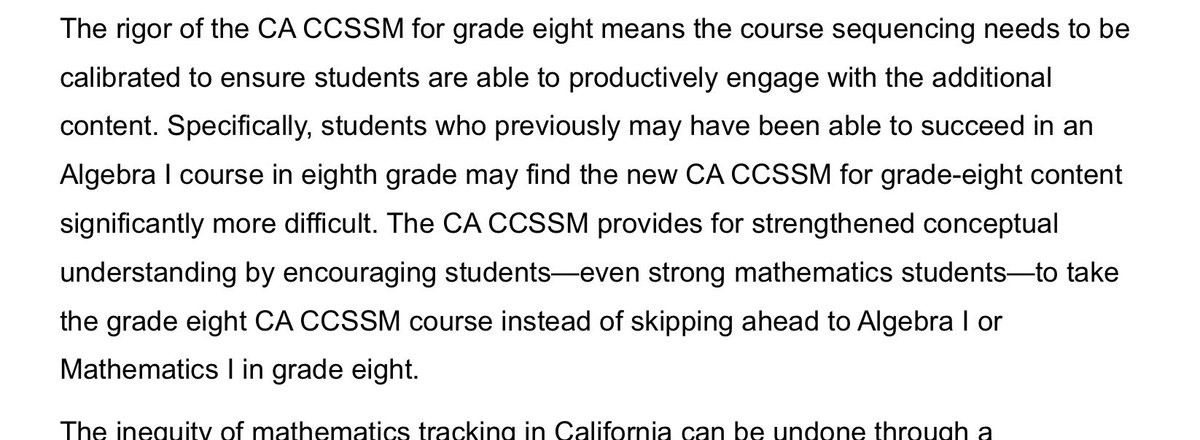
Chapter 8 (high school) again says students should take common core Math 8 in 8th grade and Math I in high school.
It says acceleration of Math I in 8th grade comes from “incorrect conclusions that Calculus is an important high school goal”
Then it contradicts itself ...
It says acceleration of Math I in 8th grade comes from “incorrect conclusions that Calculus is an important high school goal”
Then it contradicts itself ...
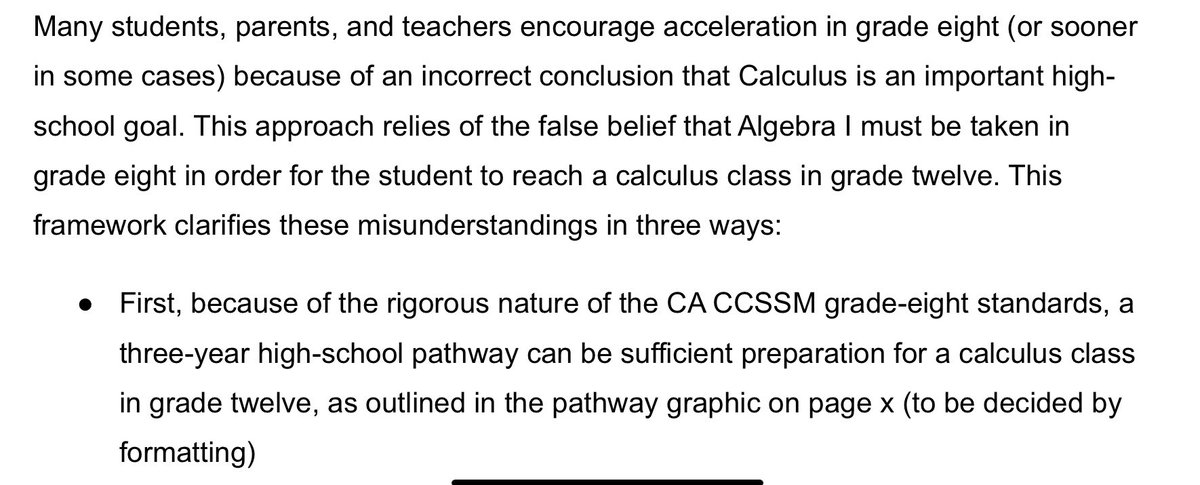
Right after saying Calculus should not be a goal, the framework waves a wand to declare that an entire year of pre-calculus students currently take is not actually necessary for calculus.
Then immediately repeats that “the push to Calculus in grade twelve is itself misguided”
Then immediately repeats that “the push to Calculus in grade twelve is itself misguided”
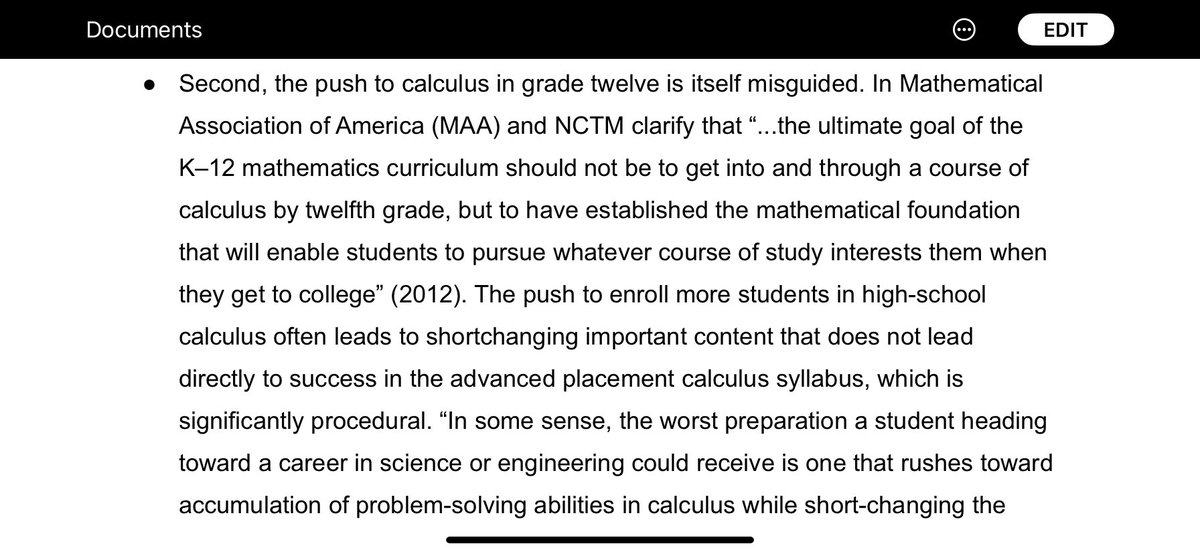
So does it allow calculus for high schoolers?
It pretends to allow it. But it disallows the grade 7/8 acceleration needed to have time for pre-calc.
Then it sandwiches a statement that pre-calc is unnecessary between two statements that high schoolers shouldn’t take calculus.
It pretends to allow it. But it disallows the grade 7/8 acceleration needed to have time for pre-calc.
Then it sandwiches a statement that pre-calc is unnecessary between two statements that high schoolers shouldn’t take calculus.
I think that is a formula for the supposed “Calculus & Trig” course to be a glorified pre-calculus course, not AP Calculus.
Which the authors of the framework would say is fine, because they don’t think you should take calculus until college.
Which the authors of the framework would say is fine, because they don’t think you should take calculus until college.
In any case,’this framework would be highly objectionable for abolishing enhanced/accelerated math classes until grade 11 - even if you think it does not de facto eliminate high school calculus.
• • •
Missing some Tweet in this thread? You can try to
force a refresh










